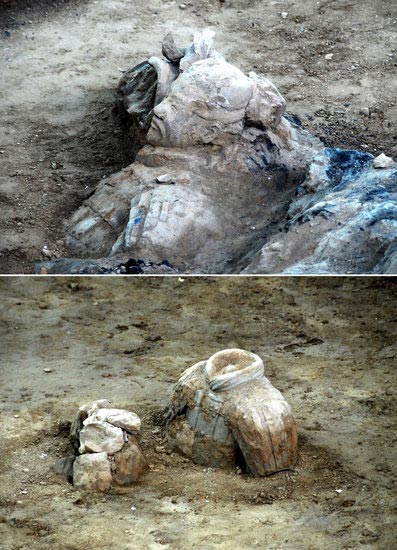Chinese archaeologists will begin the third excavation of the famous terracotta army site on Saturday, hoping to find more clay figures and unravel some of the mysteries left behind by the "First Emperor".
 |
|
Chinese archaeologists will begin the third excavation of the famous terracotta army site on Saturday, hoping to find more clay figures and unravel some of the mysteries left behind by the "First Emperor". [CFP]
|
Archaeologists hoped they might find a clay figure that appeared to be "in command" of the huge underground army, said Liu Zhancheng, head of the archeological team under the terracotta museum in Xi'an, capital of Shaanxi Province.
"We're hoping to find a clay figure that represented a high-ranking army officer, for example," he told Xinhua Tuesday.
Liu and his colleagues are also hoping to ascertain the success of decades of preservation efforts to keep the undiscovered terracotta figures intact and retain their original colors.
Richly colored clay figures were unearthed from the mausoleum of Qinshihuang, the first emperor of a united China, in previous excavations, but once they were exposed to the air they began to lose their luster and turn an oxidized grey.
The upcoming excavation into the first and largest of the three pits at the site would last at least a year, said Wu Yongqi, curator of the museum.
The 230 by 62-meter pit was believed to contain about 6,000 life-sized terracotta figures, more than 1,000 of which were found in previous excavations, said Wu.
The State Administration of Cultural Heritage has approved the museum's dig of 200 square meters of the site, and the excavation is likely to continue if it proves fruitful.
Most experts believe the pit houses a rectangular army of archers, infantrymen and charioteers that the emperor hoped would help him rule in the afterlife.
But Liu Jiusheng, a Chinese historian in Xi'an, claims it was an army of servants and bodyguards rather than warriors. His argument is still not widely accepted by other terracotta experts.
The army is still known to most Chinese people as the "terracotta warriors and horses".
The army was one of the greatest archeological finds of modern times. It was discovered in Lintong county, 35 km east of Xi'an, in 1974 by peasants who were digging a well.
The first formal excavation of the site lasted for six years from 1978 to 1984 and produced 1,087 clay figures. A second excavation, in 1985, lasted a year and was cut short for technical reasons.
The discovery, listed as a world heritage site by UNESCO in December 1987, has turned Xi'an into one of China's major tourist attractions.